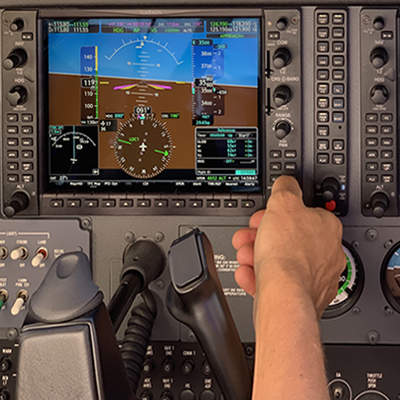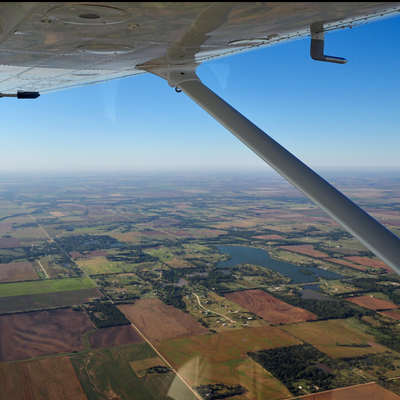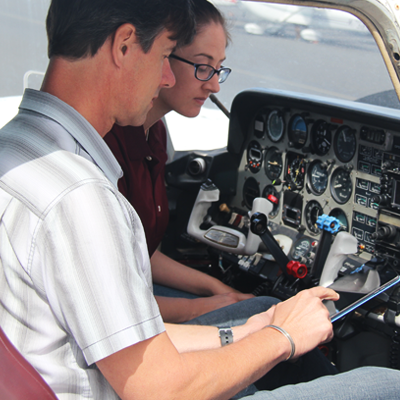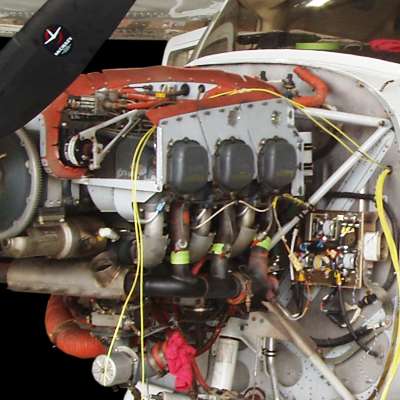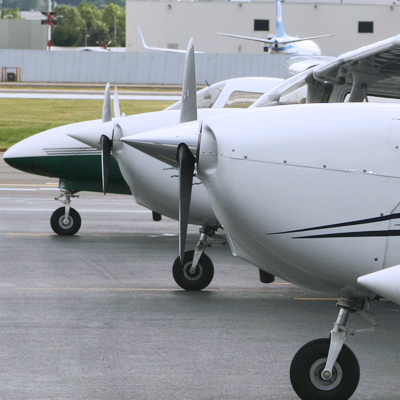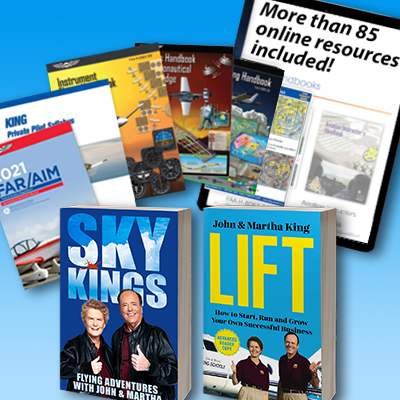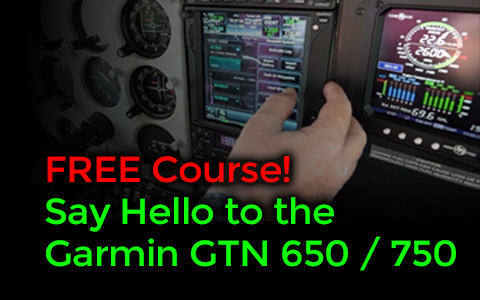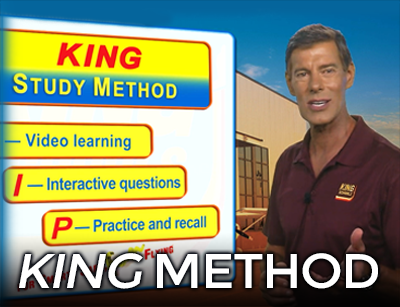ACS Missed Question Codes - Airline Transport Pilot
FAA Missed ACS Codes
for Airline Transport Pilot Exams
Airline Transport Pilot ACS Exams
Got some missed questions on your ATP written test? No worries, it happens to all of us. If the codes listed on your test results start with "AA", you're in the right place. Your ATP ACS missed question codes will be listed below, and you can see which subject areas to study more. Keep in mind, you won't know exactly which questions you got wrong, only the general subjects missed.
- If you missed any questions on your FAA Knowledge Test, you will find the Airman Certification Standards codes on your test report.
- Your flight instructor will review the material of the missed Airman Certification Standards codes prior to taking your practical test.
Click Here to view, and if desired, download, your ACS document.
ACS Code
Knowledge Area
AA.I.A.K1
Landing gear - extension/retraction system(s), indicators, float devices, brakes, antiskid, tires, nose-wheel steering, and shock absorbers.
AA.I.A.K2
Powerplant - controls and indications, induction system, carburetor and fuel injection, turbocharging, cooling, mounting points, turbine wheels, compressors, deicing, anti-icing, and other related components.
AA.I.A.K3
Propellers - type, controls, feathering/unfeathering, auto-feather, negative torque sensing, synchronizing, synchrophasing, and thrust reverse including uncommanded reverse procedures.
AA.I.A.K4
Fuel system - capacity, drains, pumps, controls, indicators, cross-feeding, transferring, jettison, fuel grade, color and additives, fueling and defueling procedures, and fuel substitutions.
AA.I.A.K5
Oil system - capacity, allowable types of oil, quantities, and indicators.
AA.I.A.K6
Hydraulic system - capacity, pumps, pressure, reservoirs, allowable types of fluid, and regulators.
AA.I.A.K7
Electrical system - alternators, generators, batteries, circuit breakers and protection devices, controls, indicators, and external and auxiliary power sources and ratings.
AA.I.A.K8
Pneumatic and environmental systems - heating, cooling, ventilation, oxygen, pressurization, supply for ice protection systems, controls, indicators, and regulating devices.
AA.I.A.K9
Avionics and communications - autopilot, flight director, Electronic Flight Instrument Systems (EFIS), Flight Management System (FMS), Electronic Flight Bag (EFB), Radar, Inertial Navigation Systems (INS), Global Navigation Satellite System (GNSS), SpaceB
AA.I.A.K10
Ice protection - anti-ice, de-ice, pitot-static system protection, turbine inlet, propeller, windshield, airfoil surfaces, and other related components.
AA.I.A.K11
Crewmember and passenger equipment - oxygen system, survival gear, emergency exits, evacuation procedures and crew duties, quick donning oxygen mask for crewmembers, passenger oxygen system.
AA.I.A.K12
Flight controls - ailerons, elevator(s), rudder(s), control tabs, control boost/augmentation systems, flaps, spoilers, leading edge devices, speed brakes, stability augmentation system (e.g., yaw damper), and trim systems.
AA.I.A.K13
Pitot-static system with associated instruments and the power source for those flight instruments. Operation and power sources for other flight instruments.
AA.I.A.K14
Fire & smoke detection, protection, and suppression - powerplant, cargo and passenger compartments, lavatory, pneumatic and environmental, electrical/avionics, and batteries (on-aircraft and personal electronic devices).
AA.I.A.K15
Envelope protection - angle of attack warning and protection and speed protection.
AA.I.B.K1
Elements related to performance and limitations by explaining the use of charts, tables, and data to determine performance.
AA.I.B.K2
How to determine the following, as applicable to the class sought:
AA.I.B.K2a
a. Accelerate-stop / accelerate-go distance
AA.I.B.K2b
b. Takeoff performance (e.g., balance field length, VMCG)
AA.I.B.K2c
c. Climb performance
AA.I.B.K2d
d. Cruise performance (e.g., optimum and maximum operating altitudes)
AA.I.B.K2e
e. Descent performance
AA.I.B.K2f
f. Landing performance
AA.I.B.K2g
g. Performance with an inoperative powerplant for all phases of flight (AMEL, AMES)
AA.I.B.K2h
h. Weight and balance and how to shift weight
AA.I.B.K3
Factors affecting performance, to include:
AA.I.B.K3a
a. Atmospheric conditions
AA.I.B.K3b
b. Pilot technique
AA.I.B.K3c
c. Aircraft configuration (e.g., flap setting)
AA.I.B.K3d
d. Airport environment (e.g., runway condition, land and hold short operations (LAHSO))
AA.I.B.K3e
e. Loading (e.g., center of gravity)
AA.I.B.K3f
f. Weight and balance
AA.I.B.K4
Aerodynamics and how it relates to performance.
AA.I.B.K5
Adverse effects of exceeding an airplane limitation or the airplane operating envelope.
AA.I.B.K6
Effects of icing on performance.
AA.I.B.K7
Clean wing concept; deicing and anti-icing procedures to include use of appropriate de-ice fluid, hold-over tables, calculating hold-over times, and pre-takeoff contamination checks.
AA.I.B.K8
Air carrier weight and balance systems (e.g., average weight program). (ATP AMEL, AMES)
AA.I.B.K9
Runway assessment and condition reporting and use of the Runway Condition Assessment Matrix (RCAM). (ATP AMEL, AMES)
AA.I.C.K1
Sources of weather data (e.g., National Weather Service, Flight Service) for flight planning purposes.
AA.I.C.K2
Acceptable weather products and resources utilized for preflight planning, current and forecast weather for departure and en route operations and arrival phases of flight.
AA.I.C.K3
Meteorology applicable to the departure, en route, alternate, and destination for flights conducted under Instrument Flight Rules (IFR) to include expected climate and hazardous conditions such as: (Note: If K3 is selected, the evaluator must assess the a
AA.I.C.K3a
a. Atmospheric composition and stability
AA.I.C.K3b
b. Wind (e.g., crosswind, tailwind, windshear, mountain wave, etc.)
AA.I.C.K3c
c. Temperature
AA.I.C.K3d
d. Moisture/precipitation
AA.I.C.K3e
e. Weather system formation, including air masses and fronts
AA.I.C.K3f
f. Clouds
AA.I.C.K3g
g. Turbulence
AA.I.C.K3h
h. Thunderstorms and microbursts
AA.I.C.K3i
i. Icing and freezing level information
AA.I.C.K3j
j. Fog/mist
AA.I.C.K3k
k. Frost
AA.I.C.K3l
l. Obstructions to visibility (e.g., smoke, haze, volcanic ash, etc.)
AA.I.C.K4
Flight deck displays of digital weather and aeronautical information, their use to navigate around weather, and equipment limitations.
AA.I.C.K5
Low-visibility operations (e.g., surface movement, category II and III approaches). (ATP AMEL, AMES)
AA.I.C.K6
Flight Risk Assessment Tools.
AA.I.D.K1
Aerodynamics of large transport category airplanes to include flight characteristics of swept wing airplanes (e.g., Mach buffet).
AA.I.D.K2
Energy management.
AA.I.D.K3
Relationship between Mach number, indicated airspeed, true airspeed, and change over altitudes.
AA.I.D.K4
Load factor at high altitude and its effect on high and low speed operating margins.
AA.I.D.K5
Relationship between altitude capability, weight, and temperature.
AA.I.D.K6
VMO/MMO convergence and stall angle of attack.
AA.I.D.K7
Maximum Lift over Drag Ratio (L/D Max).
AA.I.D.K8
Best range and best endurance.
AA.I.D.K9
Factors which contribute to airplane upsets at high altitude and upset prevention and recovery techniques.
AA.I.E.K1
Turbine engines, thrust reversing systems, and system malfunctions.
AA.I.E.K2
Airplane automation components (i.e., flight director, autopilot), their relationship to each other, and how to manage the automation for flight.
AA.I.E.K3
Advanced navigation equipment (e.g., FMS, RNP, ADS-B, EFB, etc.) and how it is used inflight.
AA.I.E.K4
Flightpath warning systems (e.g., TCAS, TAWS) and how to respond to a warning.
AA.I.E.K5
Altitudes and conditions that require the use of oxygen masks.
AA.I.E.K6
Causes and recognition of cabin pressure loss.
AA.I.E.K7
Appropriate rudder use in transport aircraft to avoid rudder reversal.
AA.I.E.K8
Crew communications (e.g., sterile flight deck rules, briefings).
AA.I.E.K9
Operational control.
AA.I.E.K10
Elements associated with operating at complex and high traffic airports with emphasis on runway incursion prevention techniques.
AA.I.E.K11
Professional responsibilities associated with being an ATP certificate holder and how to apply leadership skills as pilot in command.
AA.I.E.K12
Crew resource management (CRM) principles and application in a multi-crew environment.
AA.I.E.K13
Use of voluntary safety programs to manage risk across an organization (e.g., Threat and error management (TEM)).
AA.I.E.K14
Operations specifications.
AA.I.F.K1
Causes, effects, recognition, and corrective actions associated with aeromedical and physiological issues including: (Note: If K1 is selected, the evaluator must assess the applicant’s knowledge of at least three of the following sub-elements.)
AA.I.F.K1a
a. Hypoxia
AA.I.F.K1b
b. Hyperventilation
AA.I.F.K1c
c. Middle ear and sinus problems
AA.I.F.K1d
d. Spatial disorientation
AA.I.F.K1e
e. Motion sickness
AA.I.F.K1f
f. Carbon monoxide poisoning
AA.I.F.K1g
g. Stress
AA.I.F.K1h
h. Fatigue
AA.I.F.K1i
i. Dehydration and nutrition
AA.I.F.K1j
j. Hypothermia
AA.I.F.K1k
k. Optical illusions
AA.I.F.K1l
l. Dissolved nitrogen in the bloodstream after scuba dives
AA.I.F.K2
Effects of alcohol, drugs, and over-the-counter medications.
AA.I.F.K3
Aeronautical Decision-Making (ADM) using Crew Resource Management (CRM) or Single Pilot Resource Management (SRM), as appropriate.
AA.I.F.K4
Components of self-assessment for determining fitness for flight.
AA.I.G.K1
14 CFR part 61, subparts A, B, and G.
AA.I.G.K2
14 CFR part 91, subparts A, B, C, F, G, and H.
AA.I.G.K3
14 CFR part 117 (AMEL, AMES).
AA.I.G.K4
14 CFR part 121, subparts A, G, K, M, O, T, U, and V (AMEL, AMES).
AA.I.G.K5
14 CFR part 135, subparts A, B, C, D, E, F, and G (ASEL, ASES).
AA.I.G.K6
49 CFR part 830.
AA.I.H.K1
The characteristics of a water surface as affected by features, such as:
AA.I.H.K1a
a. Size and location
AA.I.H.K1b
b. Protected and unprotected areas
AA.I.H.K1c
c. Surface wind
AA.I.H.K1d
d. Direction and strength of water current
AA.I.H.K1e
e. Floating and partially submerged debris
AA.I.H.K1f
f. Sandbars, islands, and shoals
AA.I.H.K1g
g. Vessel traffic and wakes
AA.I.H.K1h
h. Other characteristics specific to the area
AA.I.H.K2
Float and hull construction and its effect on seaplane performance.
AA.I.H.K3
Causes of porpoising and skipping, and the pilot action needed to prevent or correct these occurrences.
AA.I.H.K4
How to locate and identify seaplane bases on charts or in directories.
AA.I.H.K5
Operating restrictions at various bases.
AA.I.H.K6
Right-of-way, steering, and sailing rules pertinent to seaplane operation.
AA.I.H.K7
Marine navigation aids, such as buoys, beacons, lights, sound signals, and range markers.
AA.I.H.K8
Naval vessel protection zones.
AA.I.H.K9
No wake zones.
AA.II.A.K1
Pilot self-assessment.
AA.II.A.K2
Determining that the aircraft to be used is appropriate, airworthy, and in a condition for safe flight by locating and explaining related documents such as:
AA.II.A.K2a
a. Airworthiness and registration certificates
AA.II.A.K2b
b. Operating limitations, handbooks, and manuals
AA.II.A.K2c
c. Minimum Equipment List (MEL) and Configuration Deviation List (CDL)
AA.II.A.K2d
d. Weight and balance data
AA.II.A.K2e
e. Required inspections or tests and appropriate records and documentation (e.g., dispatch release) as applicable to the proposed flight or operation.
AA.II.A.K3
Preventive maintenance that can be performed by the pilot or other designated crewmember.
AA.II.A.K4
Aircraft preflight inspection including:
AA.II.A.K4a
a. Which items must be inspected
AA.II.A.K4b
b. The reasons for checking each item
AA.II.A.K4c
c. How to detect possible defects
AA.II.A.K4d
d. The associated regulations
AA.II.A.K5
Environmental factors including weather, terrain, route selection, and obstructions.
AA.II.A.K6
Requirements for current and appropriate navigation data.
AA.II.A.K7
Operations specifications, management specifications, or letters of authorization applying to a particular airplane and operation, if applicable.
AA.II.B.K1
Normal and abnormal powerplant start procedures and limitations, including the use of an auxiliary power unit (APU) or external power source (if applicable).
AA.II.B.K2
Starting under various conditions.
AA.II.B.K3
Malfunctions during powerplant start, procedures to address the malfunction, and any associated limitations.
AA.II.B.K4
Coordinating and communicating with ground personnel for powerplant start, if applicable.
AA.II.C.K1
Current airport aeronautical references and information resources such as the Chart Supplement, airport diagram, and NOTAMs.
AA.II.C.K2
Taxi instructions/clearances including published taxi routes.
AA.II.C.K3
Airport markings, signs, and lights.
AA.II.C.K4
Appropriate aircraft lighting for day and night operations.
AA.II.C.K5
Push-back procedures, if applicable.
AA.II.C.K6
Appropriate flight deck activities prior to taxi, including route planning, identifying the location of Hot Spots, and coordinating with crew if, applicable.
AA.II.C.K7
Communications at towered and nontowered airports.
AA.II.C.K8
Entering or crossing runways.
AA.II.C.K9
Night taxi operations.
AA.II.C.K10
Low visibility taxi operations and techniques used to avoid disorientation.
AA.II.C.K11
Single-engine taxi procedures (AMEL).
AA.II.D.K1
Current airport/seaplane base aeronautical references and information resources including Chart Supplements, airport diagram, and appropriate references.
AA.II.D.K2
Taxi instructions/clearances, if applicable.
AA.II.D.K3
Airport/seaplane base markings, signs, and lights.
AA.II.D.K4
Appropriate aircraft lighting for day and night operations.
AA.II.D.K5
Sailing elements and techniques and when sailing should be used.
AA.II.D.K6
Considerations for determining the most favorable sailing course.
AA.II.D.K7
Airport/seaplane base procedures including:
AA.II.D.K7a
a. Appropriate flight deck activities prior to taxi or sailing, including route planning, and coordinating with crew, if applicable
AA.II.D.K7b
b. Communications at towered and nontowered seaplane bases
AA.II.D.K7c
c. Entering or crossing runways (land operation)
AA.II.D.K7d
d. Night taxi and sailing operations
AA.II.D.K7e
e. Low visibility taxi and sailing operations
AA.II.E.K1
Purpose of pre-takeoff checklist items including:
AA.II.E.K1a
a. Reasons for checking each item
AA.II.E.K1b
b. Detecting malfunctions
AA.II.E.K1c
c. Ensuring the airplane is in safe operating condition
AA.II.E.K2
Deicing and anti-icing procedures, holdover times, and pre-takeoff contamination check.
AA.II.E.K3
Adverse weather considerations for performance on takeoff (e.g., snow, ice, gusting crosswinds, low-visibility).
AA.II.E.K4
Items to be included in a before takeoff briefing.
AA.III.A.K1
Effects of atmospheric conditions, including wind, on takeoff and climb performance.
AA.III.A.K2
Appropriate V-speeds for takeoff and climb.
AA.III.A.K3
Appropriate aircraft configuration and power setting for takeoff and climb.
AA.III.A.K4
Runway markings and lighting.
AA.III.B.K1
A stabilized approach, to include energy management concepts.
AA.III.B.K2
Effects of atmospheric conditions, including wind, on approach and landing performance.
AA.III.B.K3
Wind correction techniques on approach and landing.
AA.III.B.K4
Runway markings and lighting.
AA.III.C.K1
Effects of atmospheric conditions, including wind, on takeoff and climb performance.
AA.III.C.K2
Appropriate power settings and V-speeds for takeoff and climb.
AA.III.C.K3
Appropriate airplane configuration.
AA.III.C.K4
Appropriate use of glassy water takeoff and climb technique.
AA.III.D.K1
A stabilized approach, to include energy management concepts.
AA.III.D.K2
Effects of atmospheric conditions, including wind, on approach and landing performance.
AA.III.D.K3
Wind correction techniques on approach and landing.
AA.III.D.K4
When and why glassy water techniques are used.
AA.III.D.K5
How a glassy water approach and landing is executed.
AA.III.E.K1
Effects of atmospheric conditions, including wind, on takeoff and climb performance.
AA.III.E.K2
Appropriate power settings and V-speeds for takeoff and climb.
AA.III.E.K3
Appropriate airplane configuration.
AA.III.E.K4
Appropriate use of rough water takeoff and climb technique.
AA.III.F.K1
A stabilized approach, to include energy management concepts.
AA.III.F.K2
Effects of atmospheric conditions, including wind, on approach and landing performance.
AA.III.F.K3
Wind correction techniques on approach and landing.
AA.III.F.K4
When and why rough water techniques are used.
AA.III.F.K5
How a rough water approach and landing is executed.
AA.III.G.K1
Effects of atmospheric conditions, including wind, on takeoff and climb performance.
AA.III.G.K2
Appropriate power settings and V-speeds for takeoff and climb.
AA.III.G.K3
Appropriate airplane configuration.
AA.III.G.K4
Effects of water surface.
AA.III.G.K5
Available techniques for confined-area takeoff and climb.
AA.III.H.K1
A stabilized approach, to include energy management concepts.
AA.III.H.K2
Effects of atmospheric conditions, including wind, on approach and landing performance.
AA.III.H.K3
Available techniques for confined-area approach and landing.
AA.III.H.K4
Wind correction techniques on approach and landing.
AA.III.I.K1
Conditions and situations that could warrant a rejected takeoff (e.g., takeoff warning systems, powerplant failure, other systems warning/failure).
AA.III.I.K2
Safety considerations following a rejected takeoff.
AA.III.I.K3
The procedure for accomplishing a rejected takeoff.
AA.III.I.K4
Accelerate/stop distance.
AA.III.I.K5
Relevant V-speeds for a rejected takeoff.
AA.III.J.K1
A stabilized approach, to include energy management concepts.
AA.III.J.K2
Effects of atmospheric conditions, including wind and density altitude on a go-around or rejected landing.
AA.III.J.K3
Wind correction techniques on takeoff/departure and approach/landing.
AA.III.J.K4
Situations and considerations on approach that could require a go-around/rejected landing, to include the inability to comply with a LAHSO clearance.
AA.III.J.K5
Go-around/rejected landing procedures, the importance of a timely decision, and appropriate airspeed/V-speeds for the maneuver.
AA.IV.A.K1
Energy management concepts.
AA.IV.A.K2
Aerodynamics associated with steep turns, to include:
AA.IV.A.K2a
a. Coordinated and uncoordinated flight
AA.IV.A.K2b
b. Overbanking tendencies
AA.IV.A.K2c
c. Maneuvering speed, including the impact of weight changes
AA.IV.A.K2d
d. Load factor and accelerated stalls
AA.IV.A.K2e
e. Rate and radius of turn
AA.IV.B.K1
Procedures for recovery from unusual flight attitudes.
AA.IV.B.K2
Unusual flight attitude causal factors, including physiological factors, system and equipment failures, and environmental factors.
AA.IV.B.K3
The operating envelope and structural limitations for the airplane.
AA.IV.B.K4
Effects of engine location, wing design, and other specific design characteristics that could affect aircraft control during the recovery.
AA.IV.C.K1
All specific flight and performance characteristics associated with the aircraft.
AA.V.A.K1
Aerodynamics associated with stalls in a partial flap configuration, to include the relationship between angle of attack, airspeed, load factor, power setting, aircraft weight and balance, aircraft attitude, and sideslip effects.
AA.V.A.K2
Stall characteristics (i.e., airplane design) and impending stall and full stall indications (i.e., how to recognize by sight, sound, or feel).
AA.V.A.K3
Factors and situations that can lead to a stall during takeoff or while on approach and actions that can be taken to prevent it.
AA.V.A.K4
Effects of autoflight, flight envelope protection in normal and degraded modes, and unexpected disconnects of the autopilot or autothrottle/autothrust, if applicable to the aircraft used for the evaluation.
AA.V.A.K5
Fundamentals of stall recovery.
AA.V.B.K1
Aerodynamics associated with stalls in a clean configuration, to include the relationship between angle of attack, airspeed, load factor, power setting, aircraft weight and balance, and aircraft attitude.
AA.V.B.K2
Stall characteristics (i.e., airplane design) and impending stall and full stall indications (i.e., how to recognize by sight, sound, or feel).
AA.V.B.K3
Factors and situations that can lead to a stall during cruise flight and actions that can be taken to prevent it.
AA.V.B.K4
Effects of autoflight, flight envelope protection in normal and degraded modes, and unexpected disconnects of the autopilot or autothrottle/autothrust, if applicable to the aircraft used for the evaluation.
AA.V.B.K5
Fundamentals of stall recovery.
AA.V.B.K6
Effects of altitude on performance (e.g., thrust available) and flight control effectiveness during a recovery.
AA.V.C.K1
Aerodynamics associated with stalls in the landing configuration, to include the relationship between angle of attack, airspeed, load factor, power setting, aircraft weight and balance, aircraft attitude, and sideslip effects.
AA.V.C.K2
Stall characteristics (i.e., airplane design) and impending stall and full stall indications (i.e., how to recognize by sight, sound, or feel).
AA.V.C.K3
Factors and situations that can lead to a stall when configured for landing and actions that can be taken to prevent it.
AA.V.C.K4
Effects of autoflight, flight envelope protection in normal and degraded modes, and unexpected disconnects of the autopilot or autothrottle/autothrust, if applicable to the aircraft used for the evaluation.
AA.V.C.K5
Fundamentals of stall recovery.
AA.VI.A.K1
Operational factors that could affect an instrument takeoff (e.g., runway length, runway lighting, surface conditions, wind, wake turbulence, icing conditions, obstructions, available instrument approaches or alternate airports available in the event of a
AA.VI.B.K1
Takeoff minimums; (Obstacle) Departure Procedure (ODP), including Visual Climb over the Airport (VCOA) and Diverse Vector Area (Radar Vectors); Standard Instrument Departure (SID), including RNAV departure; required climb gradients; U.S. Terminal Procedur
AA.VI.B.K2
Use of a Flight Management System (FMS) or Global Positioning System (GPS) to follow a DP.
AA.VI.B.K3
Pilot/controller responsibilities, communication procedures, and ATC services available to pilots.
AA.VI.B.K4
Two-way radio communication failure procedures after takeoff.
AA.VI.B.K5
Ground-based and satellite-based navigation (orientation, course determination, equipment, tests and regulations, interference, appropriate use of navigation data, signal integrity).
AA.VI.C.K1
Standard Terminal Arrival (STAR) charts, U.S. Terminal Procedures Publications, and IFR Enroute High and Low Altitude Charts.
AA.VI.C.K2
Use of a Flight Management System (FMS) or GPS to follow a STAR.
AA.VI.C.K3
Pilot/controller responsibilities, communication procedures, and ATC services available to pilots.
AA.VI.C.K4
Two-way radio communication failure procedures during an arrival.
AA.VI.C.K5
Ground-based and satellite-based navigation (orientation, course determination, equipment, tests and regulations, interference, appropriate use of navigation data, signal integrity).
AA.VI.D.K1
Procedures and limitations associated with a nonprecision approach, including the differences between Localizer Performance (LP) and Lateral Navigation (LNAV) approach guidance.
AA.VI.D.K2
Navigation system displays and annunciations, modes of operation, and RNP lateral accuracy values associated with an RNAV (GPS) approach.
AA.VI.D.K3
Ground-based and satellite-based navigation (orientation, course determination, equipment, tests and regulations, interference, appropriate use of navigation data, signal integrity).
AA.VI.D.K4
A stabilized approach, to include energy management concepts.
AA.VI.E.K1
Procedures and limitations associated with a precision approach, including determining required descent rates and adjusting minimums in the case of inoperative equipment.
AA.VI.E.K2
Navigation system displays, annunciations, and modes of operation.
AA.VI.E.K3
Ground-based and satellite-based navigation (orientation, course determination, equipment, tests and regulations, interference, appropriate use of navigation data, signal integrity).
AA.VI.E.K4
A stabilized approach, to include energy management concepts.
AA.VI.F.K1
Elements related to the pilot’s responsibilities, and the environmental, operational, and meteorological factors that affect landing from a precision approach.
AA.VI.F.K2
Approach lighting systems and runway and taxiway signs, markings and lighting.
AA.VI.G.K1
Elements related to circling approach procedures and limitations including approach categories and related airspeed restrictions.
AA.VI.H.K1
Elements related to the pilot’s responsibilities, and the environmental, operational, and meteorological factors that affect landing from a circling approach.
AA.VI.H.K2
Approach lighting systems and runway and taxiway signs, markings and lighting.
AA.VI.I.K1
Elements related to missed approach procedures to include reference to standby or backup instruments.
AA.VI.I.K2
Limitations associated with standard instrument approaches, including while using an FMS or autopilot, if equipped.
AA.VI.J.K1
Elements related to holding procedures, including reporting criteria, appropriate speeds, and recommended entry procedures for standard, nonstandard, published, and nonpublished holding patterns.
AA.VI.J.K2
Determining holding endurance based upon factors to include an expect further clearance (EFC) time, fuel on board, fuel flow while holding, fuel required to destination and alternate, etc., as appropriate.
AA.VI.J.K3
When to declare minimum fuel or a fuel-related emergency.
AA.VI.J.K4
Use of automation for holding to include autopilot and flight management systems, if equipped.
AA.VII.A.K1
Declaring an emergency and selection of a suitable airport or landing location.
AA.VII.A.K2
Situations that would require an emergency descent (e.g., depressurization, smoke, or engine fire).
AA.VII.A.K3
Causes of inflight fire or smoke.
AA.VII.A.K4
Airplane decompression.
AA.VII.A.K5
When an emergency evacuation may be necessary.
AA.VII.A.K6
Actions required if icing conditions exceed the capabilities of the airplane.
AA.VII.B.K1
The procedures used during a powerplant failure on takeoff, the appropriate reference airspeeds, and the specific pilot actions required.
AA.VII.B.K2
Operational considerations to include: airplane performance (e.g., sideslip, bank angle, rudder input), takeoff warning systems, runway length, surface conditions, density altitude, wake turbulence, environmental conditions, obstructions, and other relate
AA.VII.C.K1
Immediate action items and emergency procedures for a forced landing.
AA.VII.C.K2
Airspeed, to include:
AA.VII.C.K2a
a. Importance of best glide speed and its relationship to distance
AA.VII.C.K2b
b. Difference between best glide speed and minimum sink speed
AA.VIII.C.K2c
c. Effects of wind on glide distance
AA.VII.C.K3
Effects of atmospheric conditions on emergency approach and landing.
AA.VII.C.K4
A stabilized approach, to include energy management concepts.
AA.VII.C.K5
Emergency Locator Transmitter (ELTs) and other emergency locating devices.
AA.VII.C.K6
ATC services to aircraft in distress.
AA.VII.D.K1
Flight characteristics and controllability associated with maneuvering the airplane with powerplant(s) inoperative to include the importance of drag reduction.
AA.VII.D.K2
Powerplant restart procedures and conditions where a restart attempt is appropriate.
AA.VII.E.K1
Flight characteristics and controllability associated with maneuvering to a landing with inoperative powerplant(s).
AA.VII.E.K2
Go-around/rejected landing procedures with a powerplant failure.
AA.VII.E.K3
How to determine a suitable airport.
AA.VII.F.K1
Flight characteristics and controllability associated with maneuvering to a landing with inoperative powerplant(s).
AA.VII.F.K2
Missed approach considerations with a powerplant failure.
AA.VII.F.K3
How to determine a suitable airport.
AA.VII.G.K1
Airplane flight characteristics when flaps, leading edge devices, and other similar devices malfunction or become inoperative.
AA.VII.G.K2
Other airplane system limitations when landing at a high speed.
AA.VII.G.K3
How to determine required landing distance and a suitable runway for landing.
AA.VIII.A.K1
Parking, shutdown, securing, and postflight inspection.
AA.VIII.A.K2
Documenting in-flight/postflight discrepancies.
AA.VIII.B.K1
Mooring.
AA.VIII.B.K2
Docking.
AA.VIII.B.K3
Anchoring.
AA.VIII.B.K4
Beaching/ramping.


